Introduction
When, why, who, and how did the Barelvi-Deobandi divide occur in the Indian subcontinent? After 1810, among the Sunni Hanafi Muslims of Delhi and its surrounding areas in India, two groups emerged with differing beliefs:
One group stated, “Allah is the King of all kings and has the power to do whatever He wills. He even has the power to create prophets equal in rank to Gabriel or Prophet Muhammad.”
The second group countered by saying, “Indeed, Allah has all power and can do whatever He wills, but He has chosen not to create another prophet equal to Prophet Muhammad or after him.”
In response to a question, one group expressed the belief that “Allah can lie.”
The other group disagreed, saying, “Lying is not part of Allah’s attributes.”
One group said, “The Prophet Muhammad is both light (Noor) and human (Bashar), and he is present everywhere.” The second group denied this claim.
Another group stated, “The Prophet Muhammad has knowledge of the unseen (Ghaib).” However, the opposing group asserted, “Only Allah has knowledge of the unseen.”
This debate gradually intensified, moving from the madrasas and shrines to the streets, markets, and public squares, where ordinary Muslims also began participating.
Over time, such theological debates and their opposing views led to the division of Sunni Hanafi Muslims into two groups, Deobandi and Barelvi, by the early 20th century.
The scholars of both groups issued fatwas against each other, declaring one another outside the fold of Islam.
Yet, when we look at the religious, political, and social contributions of the leaders of both groups, it becomes clear that their services to Islam and Muslims have been immense. So why did this division occur?
Origin
To understand this, let’s go back to India after 1750. We will explore what the Sunni Hanafi scholars in and around Delhi were debating about, why these debates arose, and how they eventually led to the formation of the two major groups, Barelvi and Deobandi. The reasons and circumstances behind this division are both tragic and intriguing.
Let’s delve into this topic and examine its background because without understanding the historical context, it’s difficult to comprehend this issue.
By the 12th century, Muslims had gained control over many regions of India and reached the peak of their power. However, with a rise comes a decline.
Around 1750, the Muslim rule in India was in complete decline. At this critical moment, Muslim scholars took the initiative to reform the Muslim community. Among them, Shah Waliullah Dehlvi stood out. He took on the mission of reviving the lost identity of Indian Muslims through reform. To achieve this, he started teaching the Quran, Hadith, and Fiqh at his Madrasa Rahimiyya in Delhi.
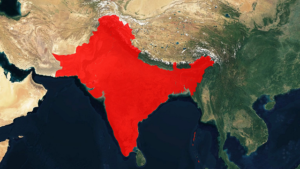
For the first time, he translated the Quran into Persian so that ordinary Muslims could understand its message and work on self-reform. After Shah Waliullah, his four prominent sons continued his mission of reforming Muslims.
One of his sons, Shah Abdul Aziz, even issued a fatwa declaring India to be a Dar al-Harb (non-Muslim state), where non-Islamic laws were being enforced instead of Islamic laws. He advised Muslims to migrate from such a state.
During Shah Abdul Aziz’s time, various scholars were adopting different approaches to reform Muslims and were also issuing fatwas. Along with the Dar-ul-Harb fatwa (declaration of India as a non-Muslim state), some scholars advocated for jihad against non-Muslims to restore Muslim rule. Meanwhile, other scholars, recognizing the strength of non-Muslims and the weakness of Muslims, chose to remain silent for the time being, believing that Muslims could reestablish their government once their situation improved.
At this time, some scholars emerged who began writing against certain beliefs and customs present in Muslim society, which they considered un-Islamic and against Sharia. They labeled these practices as innovations (bid’ah) and against the concept of monotheism (Tawheed). These scholars encouraged Muslims to abandon such un-Islamic beliefs and practices and adopt pure Islam. They believed this reform would help Muslims regain their lost dignity and strength. These scholars were known as reformists.
Before the 19th century, debates and sermons by these scholars were delivered orally, and their books were handwritten, limiting their circulation among the public. However, with the advent of the printing press in India between 1820 and 1830, scholars began printing their books and fatwas. This led to the widespread publication of their works, which made their ideas more accessible to ordinary Muslims.
Note: you may watch documentary on Barelvi-Deobandi Divide in Urdu and Hindi Language, please click on this link
Ismail Shaheed’s Doctrines that Led to Controversy
To eliminate innovations and reform Muslims, Shah Waliullah’s grandson, Shah Ismail, and his mentor from Rae Bareli, Syed Ahmed Barelvi, started the Tariqah-i-Muhammadiyah movement in 1810. Shah Ismail Shaheed wrote two important books between 1818 and 1820: Sirat-e-Mustaqeem and Taqwiyat-ul-Iman.
Taqwiyat-ul-Iman focused on the core concept of Tawheed. The book criticized certain beliefs and practices that Shah Ismail Shaheed believed contradicted the idea of monotheism, labeling them as shirk (associating partners with Allah) and sinful. Critics of the book argue that it was essentially a translation of Kitab al-Tawheed by Muhammad ibn Abd al-Wahhab, the founder of Wahhabi Islam in Arabia.
Barbara Metcalf, in her book Islamic Revival in British India, writes that Shah Ismail Shaheed’s followers claimed there were three main threats to the concept of Tawheed during his time:
- Incorrect Sufi practices, particularly those that conflicted with the Quran and Sunnah.
- Shia beliefs.
- Local customs and traditions that distorted Islamic teachings.

If we summarize the key points of Shah Ismail Shaheed’s ideas, they include the following:
- Concept of Imkan-e-Nazeer
Shah Ismail presented the concept of Imkan-e-Nazeer in his book Taqwiyat-ul-Iman. This idea posed the question:
“Can Allah create another prophet equal in rank to Prophet Muhammad?”
Shah Ismail argued that “Allah, being the King of all kings, has immense power.” He stated:
“If Allah wills, He can create hundreds of messengers equal in rank to Muhammad, Gabriel, and other prophets, saints, or angels, simply by uttering the word ‘Be’.”
- Concept of Imkan-e-Kizb
Another controversial idea was the concept of Imkan-e-Kizb, which raised the question:
“Can Allah lie?”
Shah Ismail’s group believed that Allah has the power to do everything, including lying, if He so wills, because He is all-powerful. They reasoned that if a human being has the ability to lie, then it cannot be said that Allah, with His infinite power, lacks this ability. They argued that denying this would imply that human power exceeds divine power.
- Criticism of Certain Practices in Muslim Society
Shah Ismail criticized several practices and beliefs among Muslims:
- Intermediaries between humans and Allah: He rejected the idea of saints (pirs or awliya) acting as intermediaries between a believer and Allah.
- Calling upon saints for help: He considered invoking saints, prophets, imams, martyrs, angels, or any other being in times of difficulty to be shirk (associating partners with Allah).
- Naming children after saints or using their symbols: Shah Ismail condemned naming children after saints, wearing their specific symbols, and urged people to call upon Allah alone.
- Chanting the names of saints during worship: He criticized practices like chanting the names of saints (tasawwur-e-sheikh) and condemned rituals associated with these beliefs.
- Visiting shrines and related practices: He strongly criticized acts such as prostrating at shrines, wearing special clothes, circumambulating graves, sacrificing animals at shrines, lighting lamps on graves, and drinking water from shrines considering it sacred. He labeled these practices as shirk.
- Fatiha Khwani rituals: He opposed ceremonies like fatiha khwani, where food is distributed at shrines or graves.
- Extravagant celebrations for life events: Shah Ismail criticized lavish celebrations associated with weddings, circumcisions, and funerals. He supported the Islamic practice of widow remarriage, which was often stigmatized in Indian society due to Hindu’s concept of Satti’s influences.
- Knowledge of the unseen (Ilm-e-Ghaib): He stated that only Allah possesses knowledge of the unseen. The Prophet Muhammad ﷺ had no knowledge of the unseen except for what Allah revealed to him.
- Hadir-o-Nazir (omnipresence): He argued that only Allah is Hadir-o-Nazir (present everywhere at all times). He rejected the belief that Prophet Muhammad ﷺ has the attribute of omnipresence.
Response
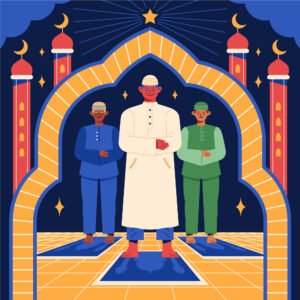
A well-known Sunni Hanafi scholar, Allama Fazl-e-Haq Khairabadi, strongly opposed Shah Ismail’s concept of Imkan-e-Nazeer. He criticized it as ‘disrespectful to the honor’ of Prophet Muhammad. In his book Tahqeeq-ul-Fatwa, written in 1822 as a rebuttal to Taqwiyat-ul-Iman, Allama Khairabadi argued that ‘while Allah has the power to do everything, He has chosen not to exercise such power.’ This idea was called Imtina-e-Nazeer (impossibility of an equal).
In response to the concept of Imkan-e-Kizb (the possibility of lying), Allama Fazl-e-Haq Khairabadi wrote that ‘lying is an evil act, and Allah is free from all evils’. He stated that ‘lying is not part of Allah’s attributes, and since He is all-powerful, there can never be a scenario where Allah would need to lie’.
Allama Fazl-e-Haq Khairabadi also labeled Shah Ismail as a Wahhabi due to these controversial ideas.
The debate among Hanafi scholars intensified, and poets of the time also got involved, using their poetry to support one side or the other. According to historian Barbara Metcalf, Mirza Ghalib supported Allama Fazl-e-Haq Khairabadi through his poetry, while another renowned poet, Hakeem Momin Khan Momin, supported Shah Ismail’s cause and praised his efforts for jihad in his verses.
For context, it is worth noting that Mirza Ghalib had his first collection of poetry (Diwan-e-Ghalib) edited by Allama Fazl-e-Haq Khairabadi. Additionally, the famous Indian poet Jan Nisar Akhtar was a great-grandson of Allama Khairabadi, and Javed Akhtar, a well-known modern poet, is Jan Nisar Akhtar’s son.
Fate and Legacy of Both Clerics
In 1831, Shah Ismail Dehlvi, the founder of the Tariqah-i-Muhammadiyah movement, was martyred along with his companions while fighting against the Sikhs in Balakot (now in Pakistan). On the other hand, Allama Fazl-e-Haq Khairabadi played a prominent role in the 1857 War of Independence, issuing a fatwa of jihad against the East India Company. For this, the British arrested him and exiled him to the infamous Kala Pani (Andaman Islands), where he passed away in 1861 while in captivity. After 1857, all Muslims in India, regardless of their sect or ideology, became targets of British oppression. Despite this, the Sunni Hanafi Muslims of India remained divided into two groups, following the ideologies of either Shah Ismail Shaheed or Allama Fazl-e-Haq Khairabadi.
British Colony
At the same time, the British were promoting Christianity through Christian missionaries, while Hindu organizations like the Shuddhi and Sangathan movements were trying to convert Muslims into Hindus. Interestingly, after the British took control of India, religious debates were not limited to Muslims. Hindus, Christians, and other groups were also engaged in religious discussions, both among themselves and within their own sects. These debates often included participation from British officials, such as district commissioners (DCs) and judges. This situation reflected the British policy of “Divide and Rule,” where divisions among people were intentionally exploited to maintain control and governance.
Next Generation of Deoband and Bareilly and Barelvi-Deobandi Divide
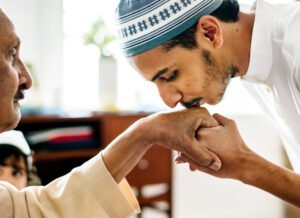
Muslim reformers, while striving to restore the lost dignity of Muslims by fighting against non-Muslims, were also engaged in ideological battles against one another. By this time, their ideas were being passed on to the next generation. The followers of Shah Ismail Shaheed were mostly found around the town of Deoband, located 90 miles north of Delhi. These people were often of Siddiqui or Usmani lineage, associated with Sheikh families. On the other hand, the supporters of Allama Fazl-e-Haq Khairabadi were concentrated in Bareilly, about 300 kilometers east of Delhi. According to Barbara Metcalf, this region included the Rohilkhand area and the Badiyoon region, primarily inhabited by Rohilla Pathans, a tribe of Afghan origin.
In Bareilly, a prominent Pathan aristocrat, Maulana Naqi Ali Khan, strongly supported Allama Fazl-e-Haq Khairabadi’s ideas. In 1876, he wrote a book refuting Shah Ismail Dehlvi’s Imkan-e-Nazeer concept, vehemently opposing it. He also labeled Shah Ismail as a Wahhabi and Najdi due to his beliefs. Maulana Naqi Ali Khan passed away in 1880, after which his son, Maulana Ahmad Raza Khan, assumed his position of leadership in Bareilly.
In Deoband, Shah Ismail’s successors established their own seminary in 1866, known as Darul Uloom Deoband. This institution began teaching the Quran, Hadith, Fiqh, and the Dars-e-Nizami curriculum. The key figures behind this school were Maulana Rashid Ahmad Gangohi and Maulana Qasim Nanotvi, while notable students included Maulana Khalil Ahmad Ambethvi and Maulana Ashraf Ali Thanvi.
Along with teaching, these scholars started writing books on various religious topics, defending Shah Ismail’s ideas. According to Barbara Metcalf, both Bareilly and Deoband scholars set up their own printing presses. By the 1880s, the publication and circulation of their books had reached its peak.
Among the Deobandi scholars, Maulana Rashid Ahmad Gangohi wrote a book titled Fatawa Rashidiya, which included various fatwas. In this book, he not only supported Shah Ismail but also declared him to be a Waliullah (a friend of Allah).
Failed Mediation
In her book Devotional Islam, Usha Sanyal notes that some Deobandi scholars tried to find a middle ground on these contentious issues. One such figure was Haji Imdadullah Muhajir Makki, a spiritual leader (Pir) to many, including Maulana Qasim Nanotvi and Maulana Rashid Ahmad Gangohi. Haji Imdadullah was also the Pir of nearly 700-800 other scholars, many of whom were educated at the Deoband seminary.
In 1894, Haji Imdadullah wrote a pamphlet titled Faisla Haft Mas’ala (The Decision on Seven Issues). In this booklet, he tried to establish a conciliatory approach between the two groups. He proposed that Muslims should avoid disputes over seven specific issues to promote unity within the Ummah.
These seven issues were as follows:
- Urs (Death Anniversary Celebrations):
The first issue was the observance of Urs, the death anniversary of saints. - Eid Milad-un-Nabi (Prophet Muhammad’s Birthday Celebrations):
The second issue was the celebration of the Prophet Muhammad’s (PBUH) birthday. - Fatiha:
This refers to reciting Fatiha (a prayer) on specific days after someone’s death, asking for intercession on their behalf. - Calling Upon Others Besides Allah:
The fourth issue involved seeking help from or invoking entities other than Allah, such as prophets or saints. - Jama’at-e-Sani (Second Congregational Prayer):
This refers to holding a second congregational prayer on Fridays at the time of Zuhr prayer. - Imkan-e-Nazir (Possibility of an Equal to Prophet Muhammad):
The question here was whether Allah could create another prophet equal to Muhammad (PBUH). - Imkan-e-Kizb (Possibility of Allah Lying):
This was a theological issue about whether Allah, having all powers, could lie.
The first five issues were related to practices, while the last two were theological matters concerning Ilm-ul-Kalam (Islamic theology).
Barelvi School of Thought
In response to Shah Ismail’s book Taqwiyat-ul-Iman, Maulana Ahmad Raza Khan wrote numerous books. On the other hand, the scholars of Deoband also wrote many works to propagate their beliefs, including Fatawa Rashidiya, Baraheen-e-Qati’a, and Tahzir-un-Nas, which became significant. Maulana Ahmad Raza Khan objected strongly to certain statements in these books. In response, he wrote a comprehensive book titled Hussam-ul-Haramain (The Sword of the Holy Sanctuaries Against the Necks of Deniers).
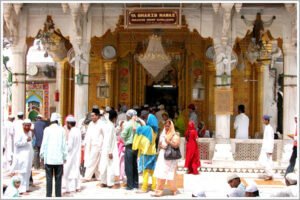
In this book, he cited passages from Deobandi scholars’ works, which he considered blasphemous and a cause of disbelief (kufr). In his book, Ahmad Raza Khan divided the Deobandi scholars into three categories of Wahhabis and declared them outside the fold of Islam. Usha Sanyal, in her book, explains this categorization as follows:
- Wahhabiyya Imamiya and Khatamiya:
Ahmad Raza Khan labeled Muhammad Qasim Nanotvi and his like-minded scholars as Wahhabiyya Imamiya and Khatamiya. He accused them of denying the uniqueness of Prophet Muhammad (PBUH) and the concept of the finality of prophethood (Khatm-e-Nabuwwat). As evidence, he frequently cited Muhammad Qasim’s pamphlet Tahzir-un-Nas. - Wahhabiyya Kazabiya:
He categorized Rashid Ahmad Gangohi as part of Wahhabiyya Kazabiya, accusing him of following Shah Ismail Dehlvi’s belief in Imkan-e-Kizb (the possibility of Allah lying). - Wahhabiyya Shaytaniya:
Ahmad Raza Khan grouped Khalil Ahmad, Ashraf Ali Thanwi, and Rashid Ahmad Gangohi together as Wahhabiyya Shaytaniya (Satanic Wahhabis). He accused them of disrespecting the knowledge of the Prophet Muhammad (PBUH). For example, he cited Ashraf Ali Thanwi’s statement in Hifz-ul-Iman, which implied that the Prophet’s knowledge was comparable to that of ordinary people, even madmen or animals, in certain aspects.
On these grounds, Ahmad Raza Khan sought endorsements from 36 scholars of Mecca and Medina, who issued fatwas declaring these individuals outside the fold of Islam. He also obtained similar endorsements from 360 scholars in India and published his book in 1906.
The Response of Deobandi School of Thought
According to Barbara Metcalf, the Deobandis claimed that the scholars of Mecca and Medina who signed the fatwas were misled by the misrepresentation of Deobandi beliefs. They argued that their doctrines had been deliberately distorted.

Metcalf writes, “This campaign caused considerable embarrassment for the Deobandis. The label ‘Wahhabi,’ whether rightly or wrongly applied, carried a politically disruptive connotation. For instance, when Maulana Khalil Ahmad visited Medina in 1906, many scholars there objected to his presence, and he was forced to leave after two weeks.”
This fatwa sparked a “fatwa war” in the early 20th century. Hundreds of signatures were collected from scholars in states like Tonk, Bhopal, and Bahawalpur—three major Muslim regions in India—affirming that the Deobandis were Sunni Hanafi Muslims. These supporters testified to the orthodoxy of Deobandi’s beliefs.
The scholars of the Haramain (Mecca and Medina) presented 26 questions to the Deobandi scholars, asking them to clarify their beliefs. These questions were answered by Maulana Khalil Ahmad Saharanpuri in the form of a book titled “Al-Muhannad Ala Al-Mufannad” (translated as “The Indian Sword Against the False Accuser”). The title symbolized the book’s purpose to refute the accusations made against the Deobandi scholars.
The Deobandi scholars responded to Ahmad Raza Khan’s questions and sent their answers to the scholars of the Haramain. In these responses, they not only reaffirmed their belief in the finality of prophethood (Khatm-e-Nabuwwat) but also provided a detailed explanation. They argued that the finality of prophethood has three aspects:
- The perfection of the Prophet Muhammad’s (PBUH) qualities.
- The succession of prophethood ending with him.
- His presence in Arabia, which they described as the best land.
Regarding the knowledge of the unseen (Ilm-ul-Ghaib), the Deobandis clarified that Prophet Muhammad (PBUH) was granted the most knowledge among all creation, even surpassing all other prophets and angels.
In response to accusations about Imkan-e-Kizb (possibility of God lying), Rashid Ahmad Gangohi stated in Fatawa Rashidiya that anyone who claims God can lie is a disbeliever (kafir).
This exchange of accusations escalated into a widespread fatwa war between the two groups. Both belonged to the Sunni Hanafi school of thought, but they became known by different names based on their respective centers of influence: Barelvi (from Bareilly) and Deobandi (from Deoband).
Key Accusations on each others
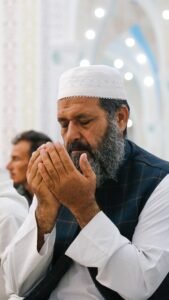
The Barelvis believe that Deobandis are guilty of disrespecting the Prophet Muhammad (PBUH) due to their “blasphemous statements.”
The Deobandis, on the other hand, accuse the Barelvis of engaging in practices related to saints (Awliya) that they consider polytheistic (shirk).
This conflict continues to this day, and analysts predict that it may persist in the future.
Role of Institutions
- Deobandi beliefs were spread through Darul Uloom Deoband and its affiliated institutions.
- Barelvi beliefs were propagated by institutions like Madrasa Manzar-ul-Islam (founded in 1904 in Bareilly), Jamia Naimia, and Darul Uloom Hizb-ul-Ahnaf in Lahore.
Role in Partition of India
In 1947, the Barelvi community played a significant role in the creation of Pakistan through their dedicated efforts. In fact, in 1946, Barelvi scholars issued fatwas declaring that anyone who did not support the Muslim League would be considered outside the fold of Islam. This led to the creation of two Muslim-majority states, Pakistan and Bangladesh, in a region where Muslims were the majority.
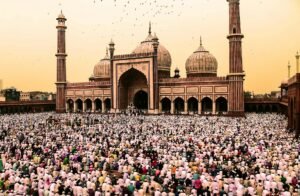
On the other hand, the Deobandi scholars opposed the partition of India, arguing that since the British had taken India away from Muslims, after the British left, Muslims should be the rightful heirs to the entire subcontinent. While they were not successful in this effort, their widespread networks of ideologies and institutions played a significant role in the politics of Pakistan and surrounding states. They contributed to the Afghan jihad of 1979 and the Kashmir insurgency. In 1997, followers influenced by Deobandi thought established a government in Afghanistan. After the U.S. invasion of Afghanistan, they engaged in conflict with the Americans, and in 2020, they successfully restored their government once again.
If you know more about this topic, please feel free to comment below and guide us. Thank you.
If you want to read complete history of Barelvi Movement, click here
If you want to read complete history of Deobandi Movement, click here
Sources
1. Barbara D. Metcalf Islamic Revival in British India: Deoband, 1860–1900
2. Dr Usha Sanyal Devotional Islam and Politics in British India: Ahmad Riza Khan Barelwi and His Movement, 1870 1920
3. Saqib Akbar Pakistan kay Deeni Masalik
4. The Muslims of Punjab and Their Politics 1936-1947 Author: Peter Scragg
5. Suleman, Muhammad. “Insitutionalisation of Sufi Islam after 9/11 and the rise of Barelvi extremism in Pakistan.” Counter Terrorist Trends and Analyses 10, no. 2 (2018): 6-10.

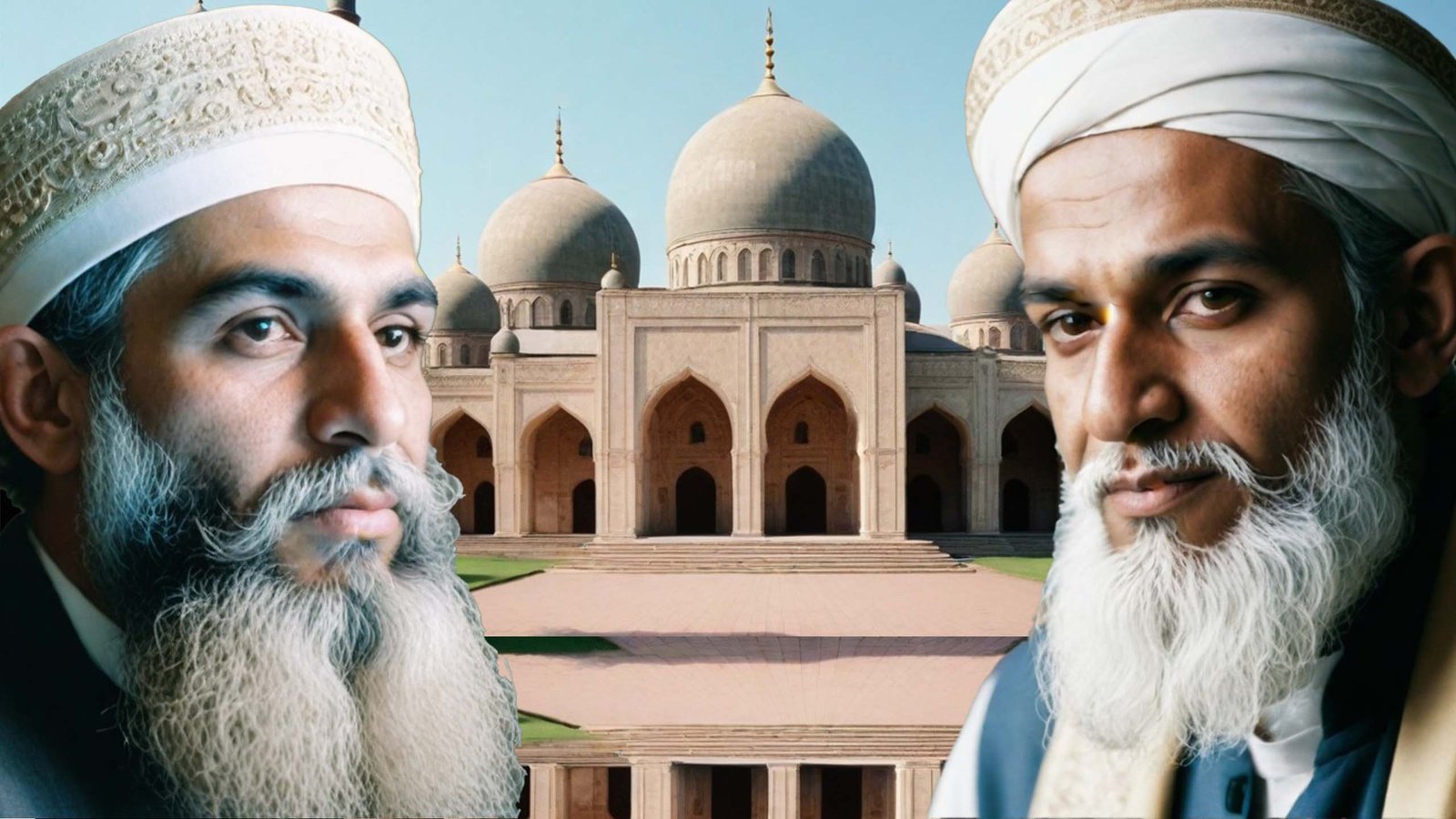
2 thoughts on “Barelvi-Deobandi Divide: History, Origins, and Key Debates in Indian Sunni Islam”